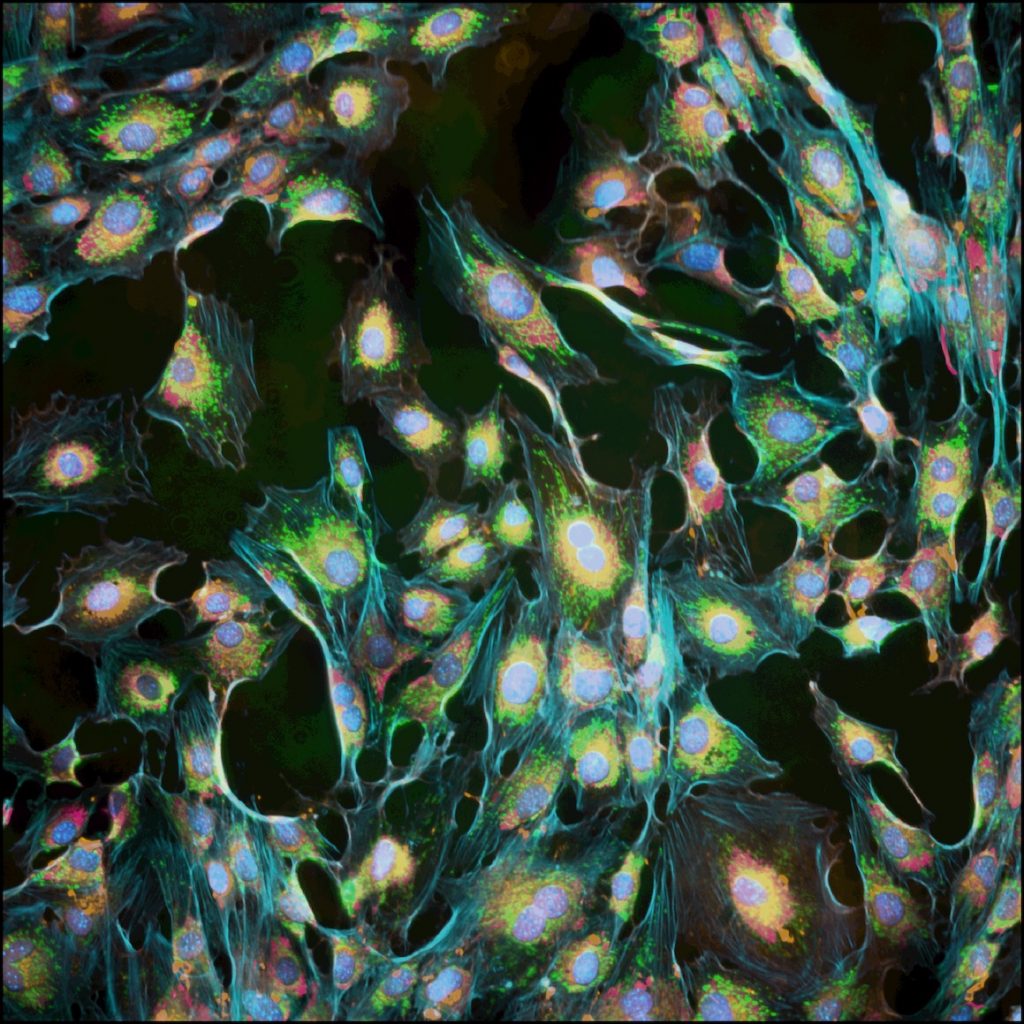A major focus of our Computing team is to develop machine learning approaches to analyze biological images. In some cases, we aim to speed up or automate analyses that are tedious to do manually. In other cases, we want to push the boundaries of scientific understanding by extracting insights from new tasks that humans have not traditionally performed. One such example is our work on analyzing images created via Cell Painting.
Cell Painting is a recently developed fluorescence microscopy protocol that allows scientists to measure the shape and distribution of organelles within a cell. Some potential uses of Cell Painting include studying genetic perturbations at the genome-wide scale, screening for drug candidates, and understanding how cells age over time. Unfortunately, humans have a lot of trouble interpreting the resulting images.
Members of Calico’s computing group have been working on a computer modeling approach that can accurately ‘read’ cell images created via Cell Painting. The team placed second out of nearly 900 teams in a world-wide competition, using machine learning to identify siRNA perturbations in a dataset consisting of more than 125,000 images.
The Computing team continues to collaborate with scientists specializing in Cell Painting technology, as well as our automation lab and various basic research labs, to further this area of research and generate and explore new scientific hypotheses.
